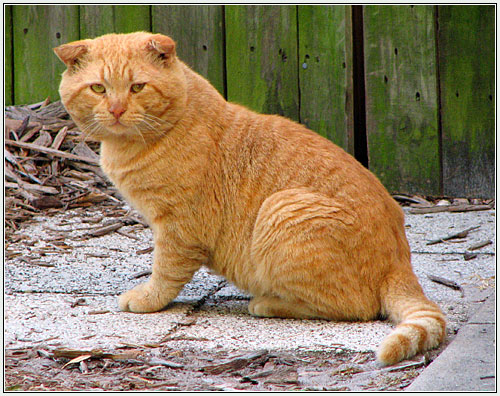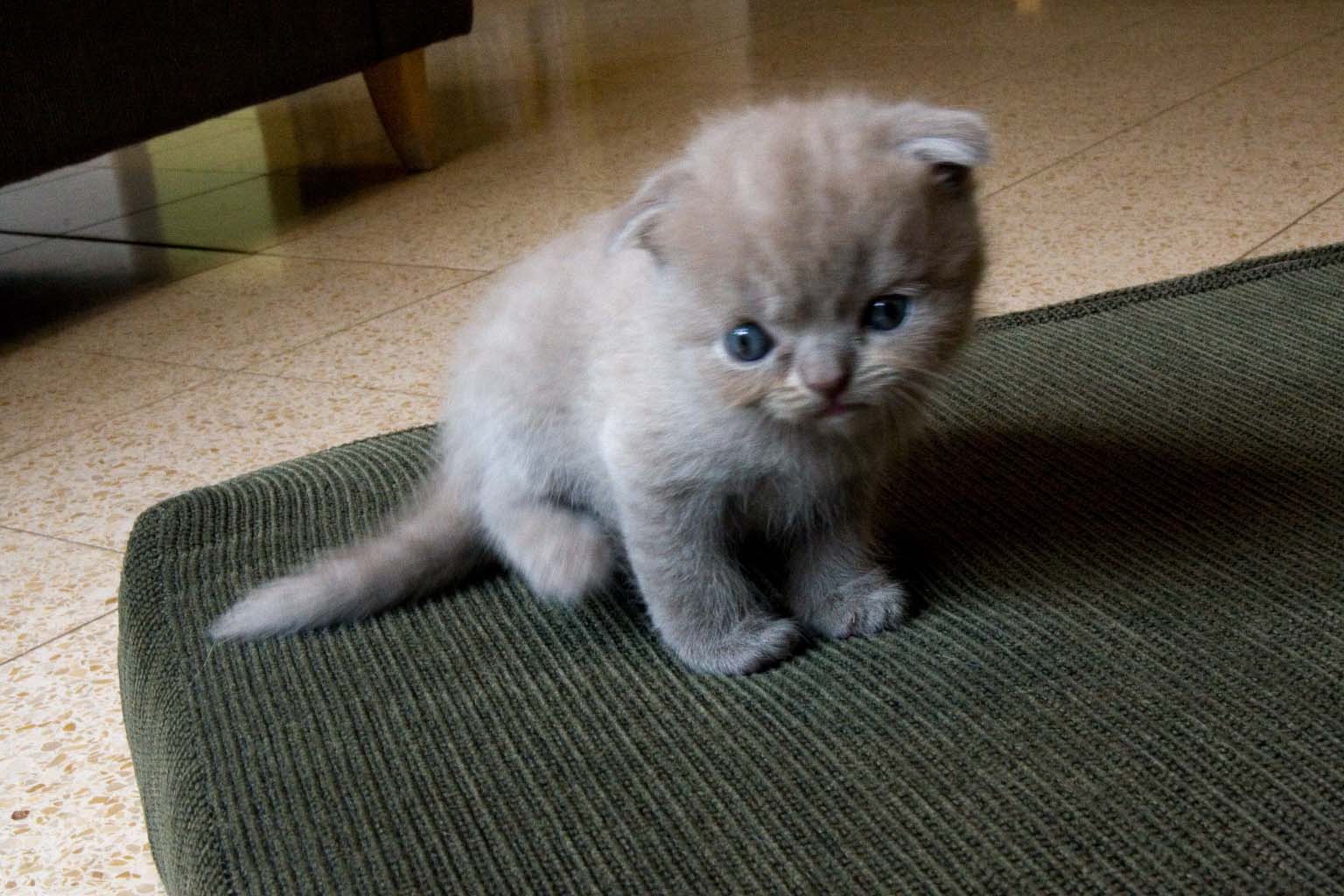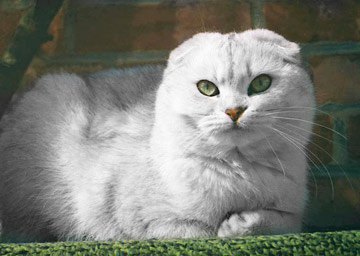



|
Scottish Fold Description
The unique fold of the ears is what sets the Scottish Fold apart from other breeds of cats. All Scottish Fold kittens are born with straight ears that will begin to fold in at three weeks, if they are going to fold at all. Despite this unique set of the ears, they function just like the ears of a regular cat: swiveling to listen, laying back when angry, and even perking up when interested. They sit on a head that is well rounded and has a firm head and jaw. These unique ears should be folded forward and downward. Small ears with tight folds are preferred over large ears and loose folds; the tips of the ears should be rounded. The eyes of the breed should be wide open and give the cat a sweet expression. They are large and well-rounded, separated by a broad nose and should compliment the color of the cats' coat.
The body of the breed is medium, rounded and even. It should stand firm with a well-padded body. There should be no lack of mobility from shortened legs and paws should be neat and well rounded. There are two coat lengths for the Scottish Fold, long and short. The short haired coat should be dense, plush and even; short to medium short in length and soft in texture. The denseness of the coat should cause the hairs to stand away from the body. The long haired coat should be medium long to long giving britches, the tail a graceful plume, toe tufts and ear furnishings. The coat comes in 38 colors and combinations.
Scottish Fold Temperament
The Scottish Fold is an intelligent and sweet tempered cat. Soft spoken and easily adaptable, they are loyal and tend to bond to one person in the household. They will allow others to hold and cuddle them, but they make their preference very plain. They are not, however, a clingy or demanding breed and prefer to be next to their person rather than in their lap. They keep their kitten like playfulness into adulthood.
Scottish Fold Care
Though most Scottish Folds are healthy and hearty, there are some lines that carry genetic deformities that affect the skeleton of the cat. These manifest in any stock that generates from Fold to Fold breeding and potential buyers must be wary and ask for the pedigree of a kitten before making a purchase. There may also be an additional build up of ear wax due to the fold in the ear and so ear cleanings may be necessary.
Scottish Fold History
The Scottish fold was discovered in Coupar Angus in the Tayside Region of Scotland, Northwest of Dundee by a Scottish shepherd named William Ross. He found a white cat with strangely folded ears and recognized her uniqueness. Asking around, he discovered that the cat, named Susie belonged to a neighbor and when her next litter produced two kittens with the same ear fold, Ross and his wife acquired one which they named Snooks. They began to breed the cats and investigate the process of getting the breed official recognition. Naming the cats lop-eared's after the rabbit, they began the process with the General Council of the Cat Fancy, and by the 1960's, the breed had been accepted and renamed the Scottish Fold.
The GCCF stopped registering Folds in the 1970's, however, after hearing concerns of infections, mites and hearing problems, so the breed headed into America. The breed was accepted for registration with the CFA in 1973, and all Scottish Folds in America can be traced back to the original Fold, Susie.
Due to some genetic problems from inbreeding, breeders are allowed to outcross their Folds to American and British Shorthairs.
|